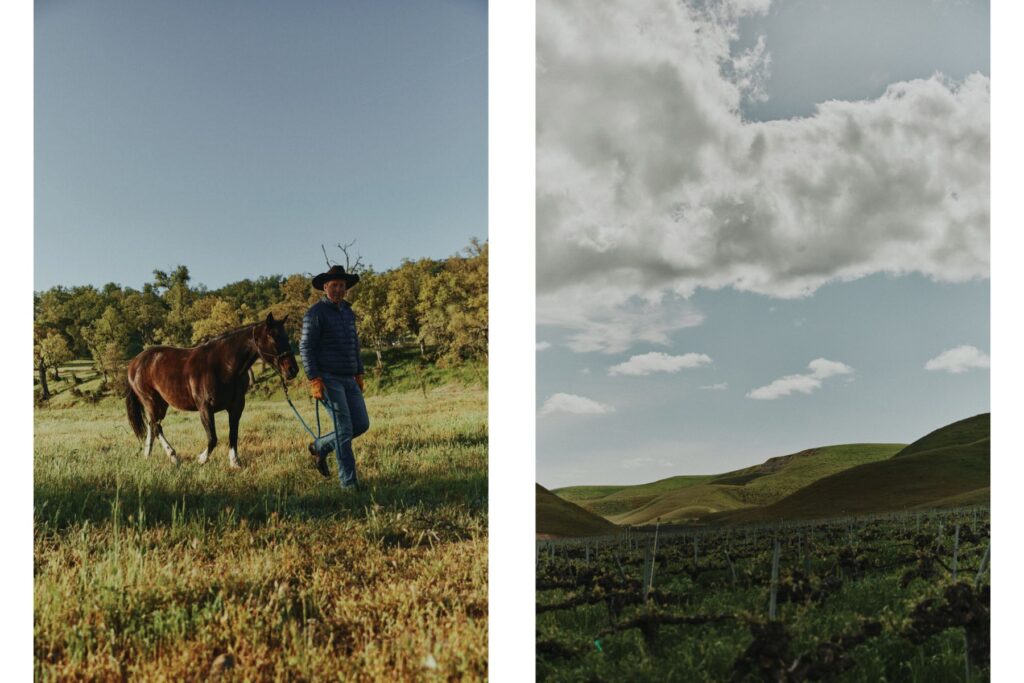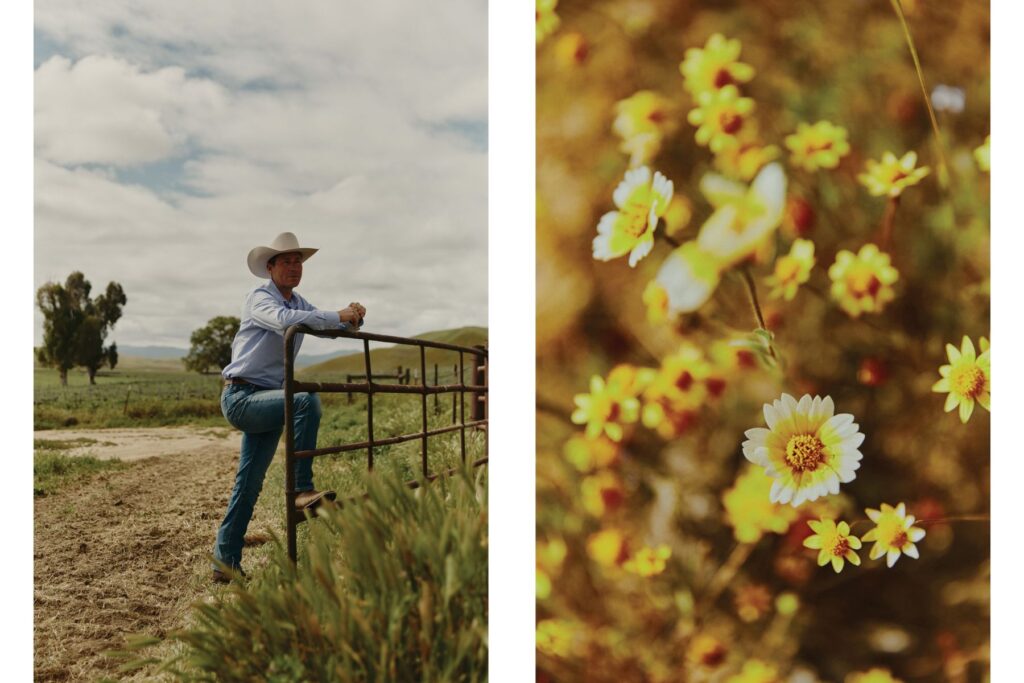
San Luis Obispo County Ranch Owner Continues Family Legacy at Avenales Ranch
Protecting San Luis Obispo County’s ranching legacy, one generation at a time.
Perspective by Daniel Sinton
Photography by Travel Paso and Lutes Media
For over 140 years the Sinton family has run the Avenales and Canyon Ranches with the dedication of preserving and protecting the land, plants and animals that call it home. In this Perspective piece, Rancher Daniel Sinton opens up about his duty and purpose to carry on working the land for his family and for the environment.
The helicopter took off from Big Jim’s house and, in typical fashion for my cousin Jack, we did an exciting spin and raced off down the canyon. We flew over our vineyards and banked toward my parents’ place, getting a rare bird’s-eye view. Big Jim was my grandfather, mentor and friend. Born James Bernard Sinsheimer, his parents changed their last name one year after his birth in 1916 to what he was known as for the remainder of his life: Jim Sinton. His grandfather, Bernard, owned a general store with his two half-brothers in San Luis Obispo in the 1870s. That building still exists today and is now home to one of the best restaurants on the central coast: Giuseppe’s Cucina Rustica. Over the course of several decades, Bernard accumulated over 70 homesteads in the far end of the Pozo Valley to create Avenales Ranch, the first of several ranches he came to own.

Six generations later, my family still owns many of these incredible places and with them, the responsibility to not only maintain the land for the next generation, but to improve it. Each generation has the opportunity to return to the ranch, yet each year since 1980, 17,000 ranchers in the U.S. have left the business or retired without a successor. I grew up wandering the canyons and climbing the hills of our ranches, often with my dog or atop my favorite horse Peso. Like most young people, I meandered my way around the world, gaining experiences and failing at different things. In the back of my mind, I always knew I wanted to return someday. But there’s a reason so many generations don’t come back: ranching isn’t for the faint of heart. While the ranch is a love of the lifestyle — days outside, hard work and the unimaginably beautiful silence that exists in open spaces like ours — most ranchers have second jobs to make ends meet.

Deep down, I believed it was my duty to return. I knew I had the knowledge that comes from growing up doing something as a part of your family’s heritage, but I also knew that the next generation may not get the chance if I didn’t continue in the four generations of footsteps before me. And what was initially duty quickly became purpose. A life’s passion for preserving this land, not just for our family, the wildlife and plants that call it home, but for the broader public.
The Canyon Ranch is split down the middle by Shell Creek Road. For the thousands of people who have visited the beautiful bloom of flowers here, very few know this is private land and that these types of open spaces exist because of the tireless efforts of generations of ranchers to manage this land. It wasn’t apparent to me growing up, but now in my early 40s, watching my children catch fish, ride horses, count elk, turkeys and bears, it’s clear why we push so hard every day. The long hours and the midnight calls about a cow having trouble calving or a fire breaking out all have a purpose.

My generation faces more pressure from the public than ever before. Much of our population has been removed from the agrarian lifestyle for long enough that they enjoy the benefits of these spaces but don’t understand it and the challenges that we, who tend to the land, face. Climate change has put a target on cattle. Don’t get me wrong, our industry has plenty it can do to help in this fight, but throwing the cows out with the bath water isn’t the answer. Vegetation — fire fuel — management and carbon sequestration on vast tracks of rangeland are being done quietly each day by ranchers and, more specifically, by the cows.

That is where ranchers are failing in the discussion. We spend our hours ensuring the safety of cattle and the upkeep of the land, and rarely speak up on issues like climate change. Every generation has a challenge to address and I believe this is mine — not just because raising cattle is our livelihood, but because it truly is the highest and best use for rangelands. Consider the wildflowers along Shell Creek Road being left unmanaged. The weeds would quickly strangle out not only the flowers, but eventually turn it into an oxidated barren field. Or worse, a housing tract.
Ranchers need your support. There aren’t that many of us left and we need to encourage the next generation to come home. Search out ways to buy local beef and other products coming from local ranches. Support organizations like the one my father started, the California Rangeland Trust, whose mission is critical in keeping ranchers ranching. We need you to help us protect what matters: clean air, fresh water, diverse wildlife and beautiful open space.



